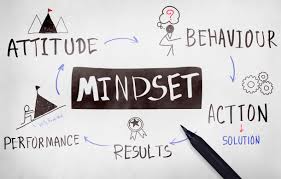
Leadership has less to do with position than it does disposition. – John Maxwell
In this space last week, I shared with you my great disdain for squirrels. In case you missed it, I am an avid birder and my backyard is somewhat of a bird sanctuary. That being said, my yard is also a haven for those pesky and unwelcomed squirrels who come and wreak their havoc and leave.
Over the years in leadership, I have discovered that there are plenty of squirrely characters that can be found. And unlike the squirrels in my yard who are not capable of being tamed, your approach to the various squirrely characters that you come across in leadership is another story.
What are the characteristics of the squirrely types of people in leadership? For the sake of context, let’s recap the main points from part one:
First, they are self-serving. They are only in it (any place of work, business, etc.) for themselves. They make decisions based only on what’s good for them. Their motives are not hard to figure out.
Second, they stick together and sow discord. Negative people tend to attract negative people in the same way as positive people. If left unchecked, negative people will ruin morale.
Third, they are indecisive – until they’re not. These squirrely types lack direction, vision, and a sense of purpose. That being said, they drive everyone else crazy.
Finally, they destroy to get what they want. In short, they are not team players. They are only in it for themselves and they don’t care about the consequences of their actions.
So, how do we tame these squirrely people in our organizations? Here are a few thoughts.
Train them early and often
Leadership development is the key to success for those squirrely members of your team. Having the skill sets to do a job are not necessarily the same as the skill sets needed to be a productive team member. Click To Tweet So long as you are content with the squirrely team member simply because she can do her job with a high degree of proficiency but is otherwise a toxic person to be around, then you have some serious leadership gaps to fill.
Don’t look the other way when it comes to squirrely behavior simply because someone can do the job. People who can do the job are a dime a dozen. If they aren’t compatible with other team members, they can be replaced. It’s on you as the leader to train and help them reach their leadership potential.
Hold them accountable
So, you have a squirrely person on your team, now what? As you train and work with this person, hold them accountable for their growth and development. Work with them on a growth plan both personally and professionally. Help them see the connection between the two – how they compliment each other. As they begin to grow and develop in their leadership skills they will gain new confidence and increase their value to your organization.
When people in your organization have a clear picture of the value that others bring to the table, it creates trust and momentum. Click To Tweet When your people trust each other and can create together, it’s magical. But each team member has to be valued, trusted, and held accountable.
Give them margins to fail and succeed
Let’s face it – we may not all be squirrelly, but we all have our quirks and pet peeves. I do. But, as we work with those squirrely people in our organizations, let’s put their value in perspective.
Not all squirrelly people need to be written off. They just need to be given opportunities. And sometimes, like us, they fail, stumble, and get it wrong. But isn’t this every successful leader’s journey?
Everyone on your team - the squirrelly and the quirky, can add value and help move the ball forward. They just need to be given a chance - some grace. Click To Tweet Will all of them pan out and remain with you? Perhaps not.
But as you train and raise up leaders and hold people accountable, the odds are in their favor if you work hard.
Final Thoughts
It’s been said that leadership is a journey, not a destination. See the journey for what it is – full of opportunities to grow and develop as leaders who make a difference in their world. Embrace the misfits and the squirrely people along the way. There’s room for the willing, the accountable, and the teachable.
©2020 Doug Dickerson
Additional reading resources:
- We Wait Too Long To Train Our Leaders by Jack Zinger
Link: https://hbr.org/2012/12/why-do-we-wait-so-long-to-trai
- Are You Leading By Example? by Doug Dickerson
Link: https://www.dougdickerson.net/2020/04/08/are-you-leading-by-example/









